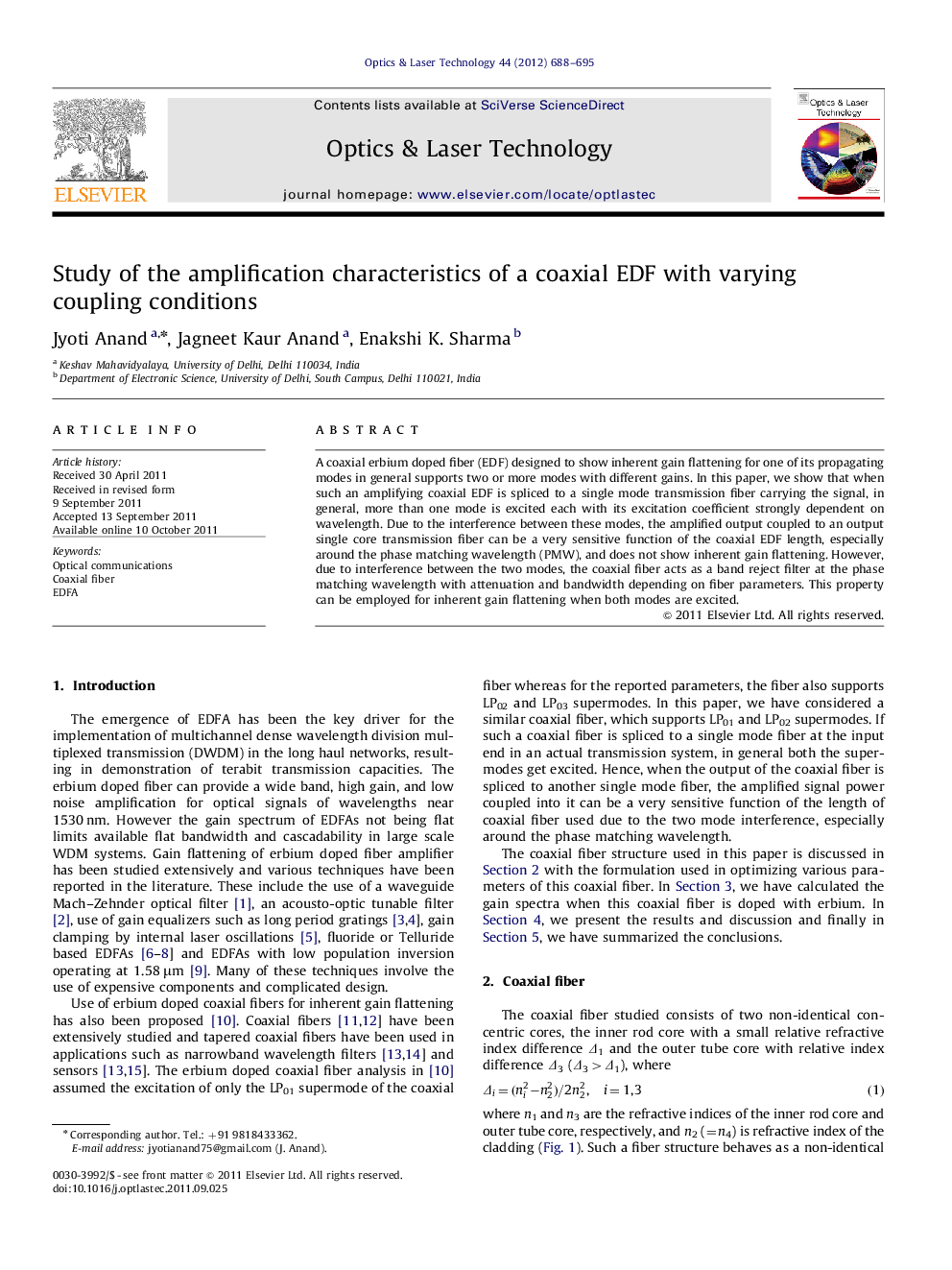| Article ID | Journal | Published Year | Pages | File Type |
|---|---|---|---|---|
| 734621 | Optics & Laser Technology | 2012 | 8 Pages |
A coaxial erbium doped fiber (EDF) designed to show inherent gain flattening for one of its propagating modes in general supports two or more modes with different gains. In this paper, we show that when such an amplifying coaxial EDF is spliced to a single mode transmission fiber carrying the signal, in general, more than one mode is excited each with its excitation coefficient strongly dependent on wavelength. Due to the interference between these modes, the amplified output coupled to an output single core transmission fiber can be a very sensitive function of the coaxial EDF length, especially around the phase matching wavelength (PMW), and does not show inherent gain flattening. However, due to interference between the two modes, the coaxial fiber acts as a band reject filter at the phase matching wavelength with attenuation and bandwidth depending on fiber parameters. This property can be employed for inherent gain flattening when both modes are excited.
► Power coupled into each supermode of coaxial EDF depends on wavelength. ► As mode propagates in coaxial fiber, power oscillates between rod and tube. ► At PMW entire power oscillates, away from PMW fraction oscillating is less. ► Power coupled to output SMF is sensitive to length of coaxial fiber around PMW. ► Coaxial fiber acts as a band reject filter at the PMW.
